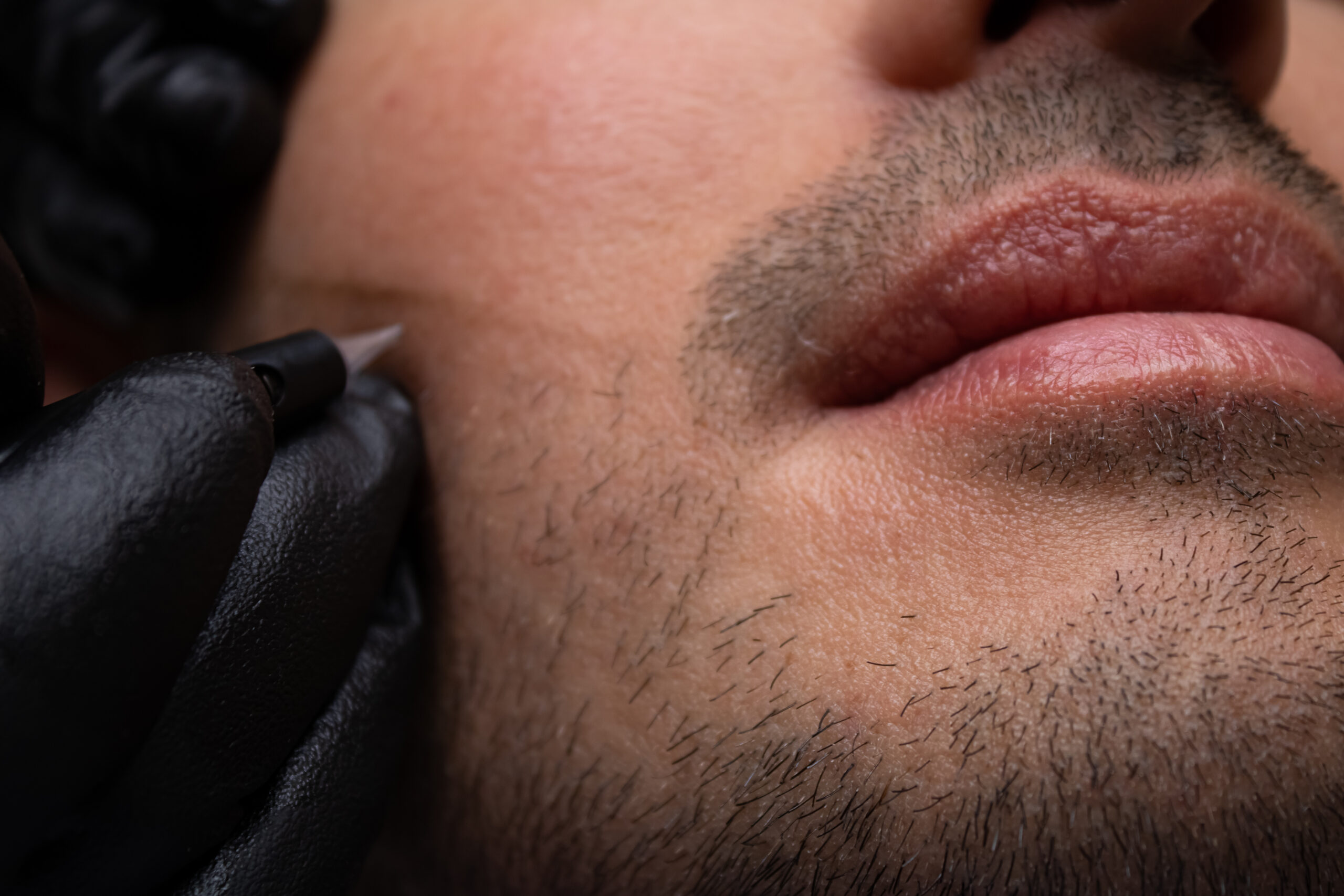Inkless scar revision (ISR) is a non-invasive cosmetic procedure that employs a vitamin-enriched serum for the treatment of scars and stretch marks.

Inkless Stretch Mark Revision (ISR) is a non-invasive cosmetic procedure designed to address the appearance of stretch marks on the skin. This innovative technique is distinguished by its use of a high-quality, skin-friendly healing serum and vitamins, rather than artificial pigments, for the treatment of stretch marks. As a result, this procedure is deemed suitable for individuals aged 18 and older.
The ISR method effectively improves the appearance of scars and stretch marks by enhancing skin tone, texture, and color. This is achieved through the application of a customized healing serum, which is tattooed into the affected areas. This process stimulates the production of collagen, elastin, and melanocytes, contributing to the overall improvement of the skin.
ISR is considered entirely safe and can be performed on all areas of the body, with the exception of the face. The outcomes of ISR treatments are permanent, provided that the individual’s weight remains stable.
The following are some of the most noteworthy benefits of inkless stretch mark removal:
– It is effective for all types of stretch marks and scar lines.
– Patients may observe an improvement following the initial session.
– The procedure is entirely safe, natural, and cost-effective.
– The experience involves minimal to no discomfort throughout the process.
– It enhances the body’s immune response and healing capacity.
– By stimulating the production of collagen, elastin, and myofibroblasts, Inkless Stretch Mark Removal (ISR) contributes to a rejuvenated and youthful appearance of the skin.
– It promotes rapid cell regeneration and cellular turnover.
-Natural: Integrated Scar Restoration (ISR) represents a more organic methodology compared to conventional tattoo techniques, which typically employ ink or skin tone pigments.
-Effective: ISR is applicable to various forms of scars and stretch marks, including those of a deeper nature, and has the potential to enhance their appearance following the initial session.
-Safe: ISR is regarded as a safer alternative to traditional skin camouflage methods. The serum utilized in ISR is devoid of pigments, metals, colorants, or common allergens.
-Cost-effective: ISR is viewed as a cost-effective solution.
-Not a Cure: It is important to note that (ISR) does not guarantee the complete eradication of stretch marks, and some may remain post-treatment.
-Maintenance: While the results of ISR are generally enduring, periodic maintenance sessions may be required to sustain optimal outcomes.
-Factors Influencing Longevity: The durability of the results may be influenced by various factors, including age, skin type, and the severity of the stretch marks.
-Lifestyle Considerations: Lifestyle choices such as sun exposure, tobacco use, and an inadequate diet can adversely impact the longevity of the results achieved through ISR.
Weight Fluctuations: Significant fluctuations in body weight may enhance the visibility of existing stretch marks or lead to the development of new ones.
During an inkless scar revision treatment, the procedure is generally painless, with use of topical anesthetic cream.
It’s important to discuss your specific scar concerns with the practitioner to assess the suitability of the treatment and the expected number of sessions required.
Following inkless scar revision, it is anticipated that there will be some degree of redness, swelling, and discomfort; however, individuals can typically resume work immediately.
*Immediately After the Procedure:
The treated area will exhibit redness and swelling, and patients may experience a sensation akin to sunburn.
Days 1–4:
During this period, the area will remain red, swollen, and tight, with a persistent sunburn-like sensation. Patients are permitted to shower 12 hours post-procedure; however, it is advisable to refrain from using hot tubs, saunas, or engaging in activities that induce sweating.
Days 3–7:
At this stage, the treated area may appear dry and flaky, with a possibility of minor scabbing. It is essential to apply aftercare products twice daily and to utilize sunscreen to protect the area.
Weeks 2–8:
The appearance of the treated area is expected to improve, becoming less irritated, flatter, and more normalized.
Weeks 4–12:
During this timeframe, the redness will gradually diminish, and the treated area will transition through various shades, ultimately returning to a lighter tone.
Most individuals require between 1 to 4 sessions for optimal results, though some may need fewer or more.
It’s essential to allow a minimum of 6 weeks for healing between sessions, while those with darker skin types may need to wait 3 to 6 months.
Results can vary significantly; some may notice improvements after just 1 or 2 sessions, while others may not see noticeable changes.
Generally, visible results tend to appear within 40 to 60 days after treatment. However, the exact timeline for results can differ based on each person’s unique physiological response.
Certain medical conditions may prevent individuals from receiving specific treatments.
It is crucial for patients to inform their healthcare providers about any relevant medical conditions before proceeding with treatments to ensure their safety.
Prices typically start at around $250 for smaller scars and can reach up to $1,500 for larger areas. The total cost varies based on the size and severity of the scar. The number of treatment sessions required will depend on the extent of the scar tissue. Smaller scars may require fewer sessions, while larger ones may need more. Overall, the treatment plan is customized to each individual’s needs.
